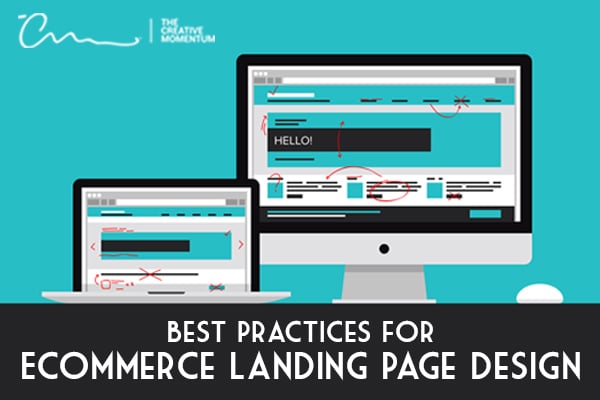
Your ecommerce landing pages are an important piece of your website development puzzle if you’re an online vendor. As such, it’s crucial that you understand how to develop and design ecommerce landing pages in a way that resonates with visitors—and enough to compel conversions.
Fortunately, landing pages are a tried-and-tested conversion tactic, and tailoring your landing pages to achieve ecommerce goals is pretty simple.
Ecommerce landing pages serve as middle-of-the-funnel engines for your advertising and marketing campaigns. Your campaigns direct potential customers to your well-designed landing pages, and those landing pages seal the deal.
It’s your job to elevate landing page design elements in order to convert. The best way to do this is to make the most of a handful of ecommerce landing page best practices.
Why are Ecommerce Landing Pages Important?
It’s common for digital marketing campaigns to tempt consumers with the promise of a deal or discount and send these prospects to a company website homepage. Which works if you’re just trying to increase brand awareness and website traffic.
Smart marketers understand the value of a good landing page. Landing pages help create a direct path to action. In that sense, a company’s homepage is a form of landing page if the intended action is awareness and traffic.
Ecommerce landing pages are more targeted and direct, often narrowing focus to a single, compelling action like buying a product or upgrading a service. Here are some reasons you might create an ecommerce landing page:
- Detail a product or category sale
- Drive a direct purchase
- Provide free content (like an e-book or white paper)
- Create a full-page, content-rich advertisement
- Offer improved or upgraded products and services
Ecommerce landing pages are most often post-click, last-step hubs that guide consumers to a final destination.
5 Ecommerce Landing Page Design Tips
Some brands go a little crazy with their landing pages, tailoring and tinkering with content excessively. It’s common for major brands and retailers to have tens if not hundreds of different landing pages active and directing consumer traffic.
It’s easier to ensure a certain action when you’ve done the legwork to create specific landing pages for a spectrum of target audiences. Often, two or more landing pages for the same campaign can prove useful in A/B testing.
The point is that ecommerce landing pages come in all shapes and sizes. Content, design, and intent vary. Keeping that in mind, let's review five ecommerce landing page design best practices that will help you maximize success.
1. Consistent Branding
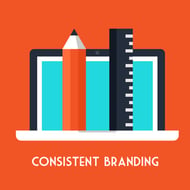
Branding is important regardless of the marketing medium. Your company is afloat in a sea of similar companies if it doesn’t have strong branding. The same can be said about your ecommerce landing pages.
Does your business brand use a strong color scheme or font formatting? Don’t be shy applying that brand aesthetic to your landing pages. Color increases brand recognition by 80%, so use those colors liberally.
Beyond color scheme, consistent branding means adhering to your brand’s voice and content style throughout the landing page. Don’t veer away from what makes you as a brand—unless a unique campaign calls for it. Otherwise, stay consistent with your branding throughout your landing page.
2. Eliminate Site Navigation
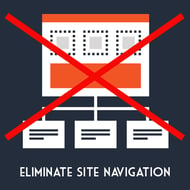
The goal of your ecommerce landing page(s) is to drive a singular action or conversion. This means that you don’t want to give visitors any reason to navigate away from the landing page other than to do exactly what you intend.
A good way to eliminate distractions on a landing page is to get rid of your website’s navigation menu entirely. The more links you include on the page, the more opportunities there are for people to leave without converting. Get rid of the navigation menu, and you get rid of potential navigation temptation.
3. Write Helpful Product or Service Descriptions
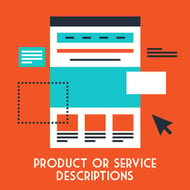
All good landing pages include just enough copy to deliver a message and not overstay the welcome. Ideally, your ecommerce landing page should include a worthwhile product or service description.
What are you selling? Why should customers buy? Use compelling content to promote what you’re offering if you want to convert customers. Avoid generic copy that you might find on a competitor’s product page and, instead, laser focus on persuasive product or service details.
4. Use Active Voice Sales Copy
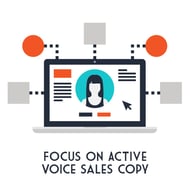
Persuasive product or service details usually come in the form of sales copy. Writing killer sales copy may seem simple, but actually requires in-depth insight into your buyer personas, and a perspective shift from traditional website copy.
Sales copy should be written using a pain point and solution dynamic. What troubles do your potential customers have that can be solved by what you’re selling? Design your ecommerce landing page content in a way that positions your offerings as the ultimate solutions to specific challenges, and they'll be more likely to convert.
5. Multiple Calls to Action
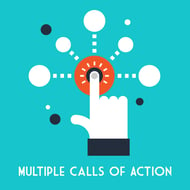
Calls to action are the friendly pokes and prods from your content design that continue to propel viewers towards conversion. How to create the perfect call to action is a marketing science all to itself, and a great call to action can do wonders for your business.
The trick with a good call to action is to get as personal as possible. Here’s where multiple landing pages aimed at different target audiences work well. In fact, according to Hubspot, personalized calls to action convert 202% better than their basic counterparts.
Try not to go overboard, but also don’t limit your ecommerce landing page to a single call to action. Find ways to sprinkle compelling calls to actions throughout your content for the best results.
These web design tips are only scratching the surface, but they’re a solid foundation upon which you can build compelling ecommerce landing pages.
Make the Most of Your Ecommerce Landing Pages
How you design your ecommerce landing pages should be subjective to your business and industry. Short, succinct landing pages are ideal for low-risk, low-investment products. Longer, more involved landing pages are better suited for complex products or services that need more detail to explain.
MarketingExperiments claims that longer landing pages net 220% more leads than above-the-fold calls to action. Craft your landing pages accordingly.
Regardless of size, make the most of your ecommerce landing pages by following the tips above to drive conversions.

